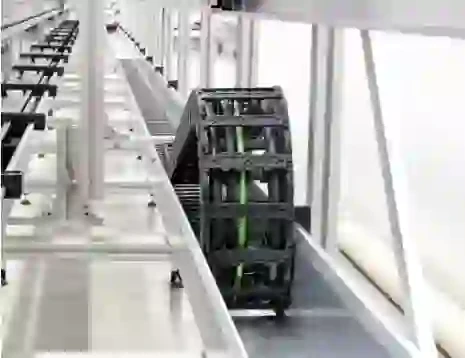machine cable track
Understanding Machine Cable Tracks Essential Insights for Efficient Operations
In the world of industrial machinery, the importance of well-designed cable management systems cannot be overstated. One of the most effective solutions is the use of machine cable tracks. These tracks play a crucial role in facilitating the seamless operation of automated machinery while ensuring safety, efficiency, and longevity of the equipment involved.
What Are Machine Cable Tracks?
Machine cable tracks, also known as cable carriers or drag chains, are specialized systems designed to guide and protect cables and hoses as they move with machinery. These tracks provide a controlled pathway for electrical cables, fluid lines, and pneumatic hoses, safeguarding them from wear and tear caused by repetitive movements. Typically constructed from durable materials such as plastic or metal, cable tracks come in various sizes and configurations to suit different applications.
Key Benefits of Using Cable Tracks
1. Protection The primary function of machine cable tracks is to shield cables and hoses from abrasion, kinks, and tangling. In an industrial environment, equipment is often subjected to harsh conditions, and the risk of damage to wiring can lead to costly downtime and repairs. By providing a protective enclosure, cable tracks enhance the longevity of the components they carry.
2. Organization In any machinery setup, especially in complex systems with multiple cables, organization is paramount. Cable tracks help maintain a neat and orderly workspace by preventing cables from becoming a tangled mess. This not only promotes a safer working environment but also facilitates easier maintenance and troubleshooting.
3. Enhanced Mobility Machines equipped with cable tracks can operate more efficiently. The tracks are designed to accommodate movements, allowing cables to extend and retract smoothly without causing stress or damage. This is particularly important in applications involving robotic arms or machinery that features rotational or linear movements.
4. Reduced Wear and Tear Continuous movement can lead to significant wear on cables and hoses. Machine cable tracks mitigate this issue by reducing friction and providing a smooth path for the cables to travel. As a result, the overall lifespan of the cables is extended, leading to lower replacement costs and increased operational efficiency.
machine cable track

5. Adaptability Today’s manufacturing environments are highly dynamic, often requiring frequent changes in equipment layout or cable configurations. Machine cable tracks offer remarkable adaptability, allowing for easy modifications and reconfigurations without the need for extensive overhauls. This flexibility ensures that as operations grow or change, the cable management system can evolve accordingly.
Design Considerations
When selecting machine cable tracks, there are several factors to consider
- Material The choice of material is critical, as it affects durability and resistance to environmental factors like temperature, chemicals, and moisture. Common materials include high-density polyethylene (HDPE), polypropylene, and aluminum.
- Size and Capacity A well-chosen cable track should accommodate the diameter and quantity of cables being used. It's important to assess the dimensions and weight of the cables to ensure they fit comfortably within the track without risk of damage.
- Bend Radius The bend radius is vital in maintaining cable integrity. A too-tight bend can cause strain, leading to premature failure. Manufacturers often provide guidelines for optimal bend radii, which should be adhered to for efficient performance.
- Installation and Maintenance Consider how easy it is to install and maintain the cable track system. Some designs offer tool-free assembly or modular components that can simplify the process and minimize downtime.
Conclusion
In conclusion, machine cable tracks are an essential component in modern industrial operations, offering a combination of protection, organization, and efficiency. By investing in a robust cable management system, businesses can enhance productivity, reduce maintenance costs, and extend the lifespan of their equipment. As industries continue to evolve, the significance of well-designed cable tracks will only grow, making them an indispensable asset in manufacturing and automation sectors. Understanding their benefits and properly implementing them within operational frameworks will lead to smoother processes and greater overall success.








